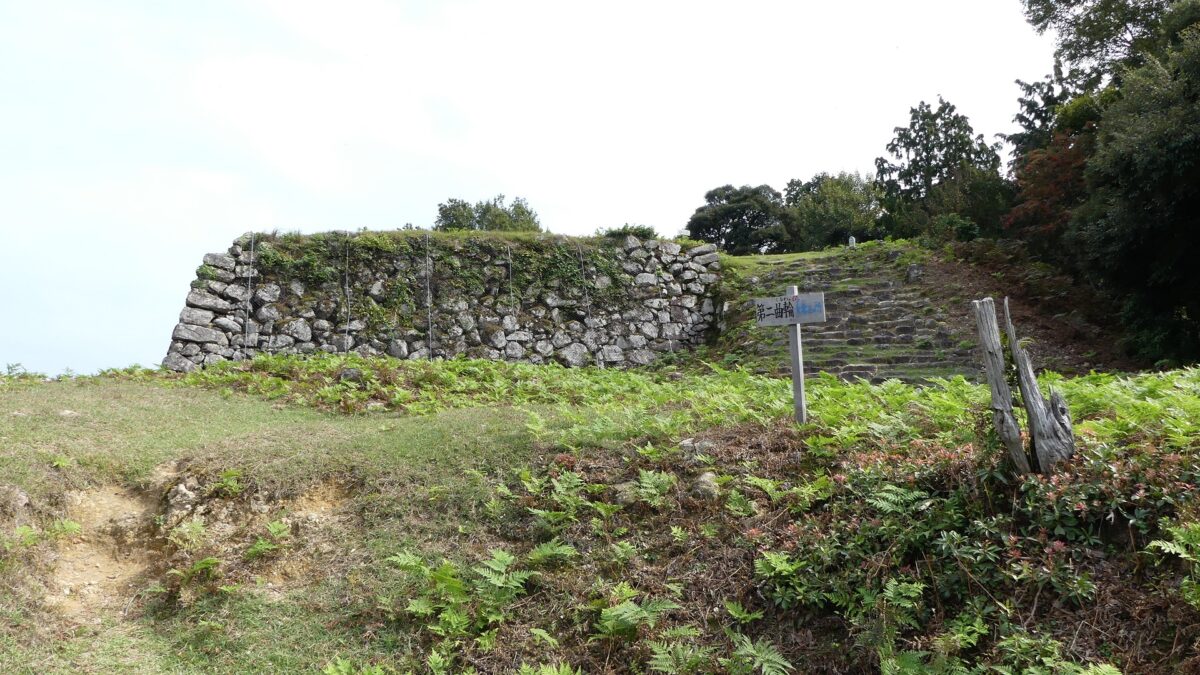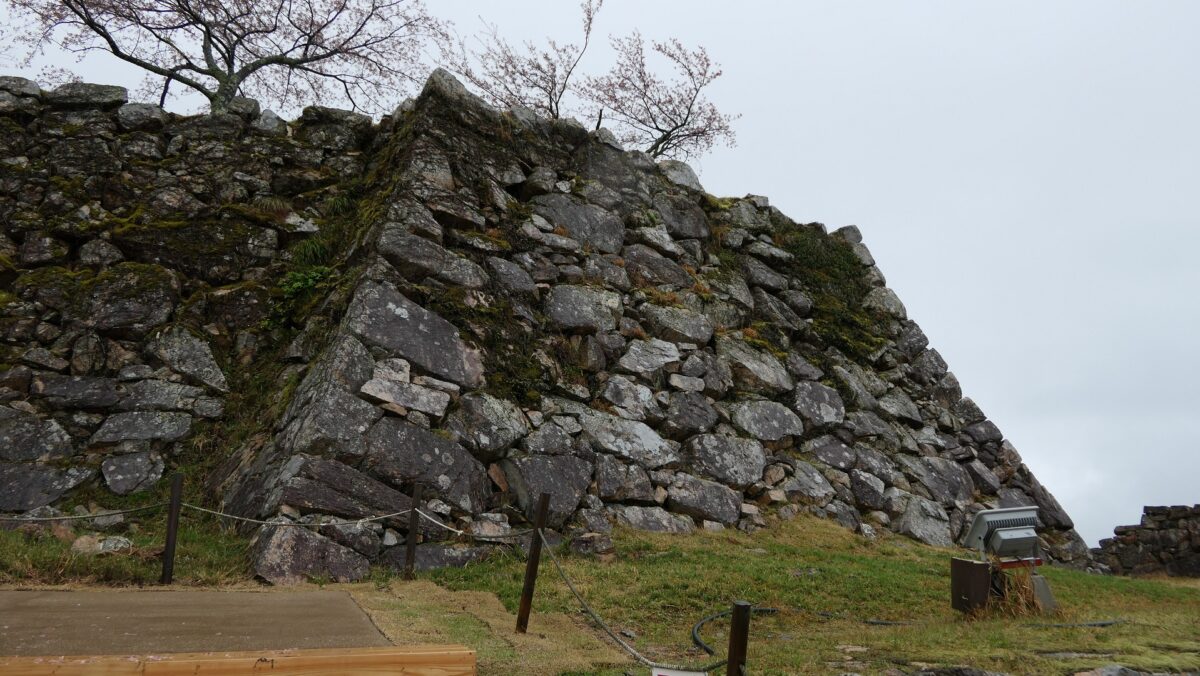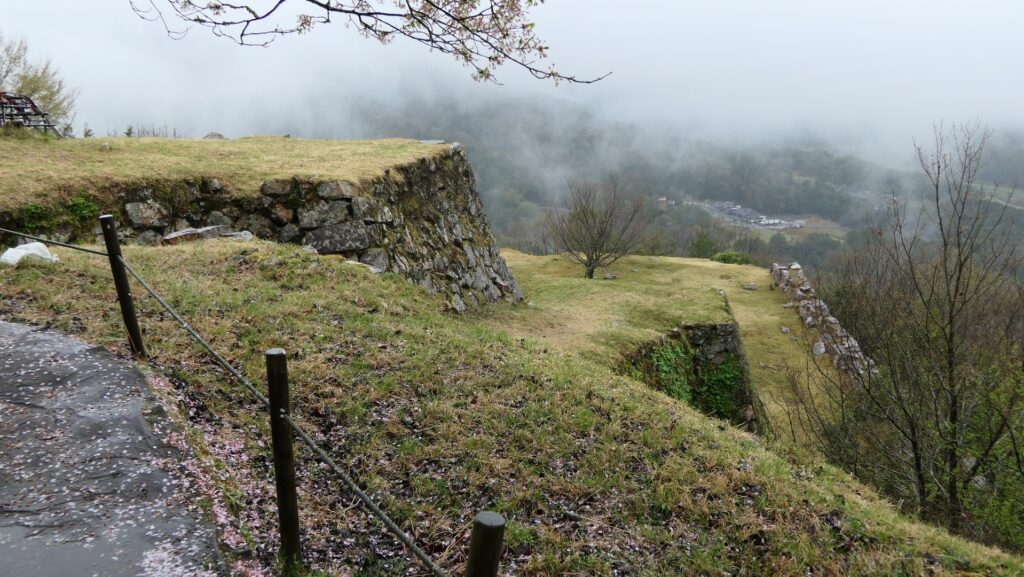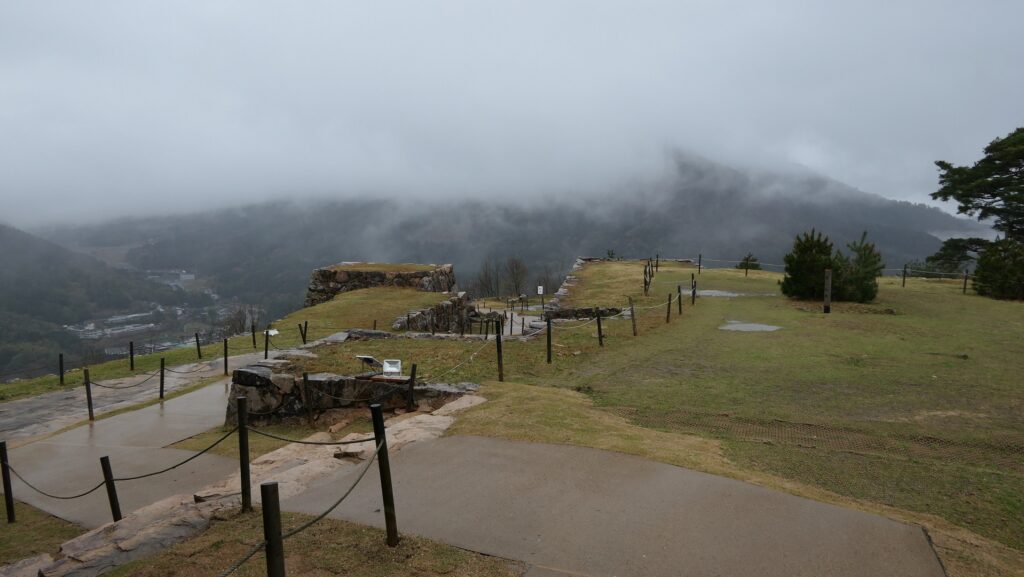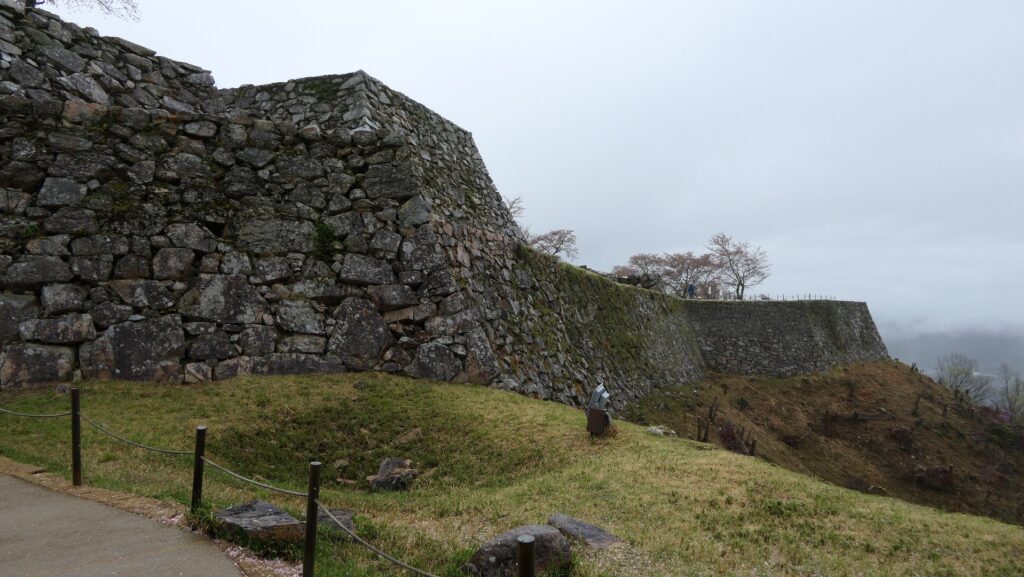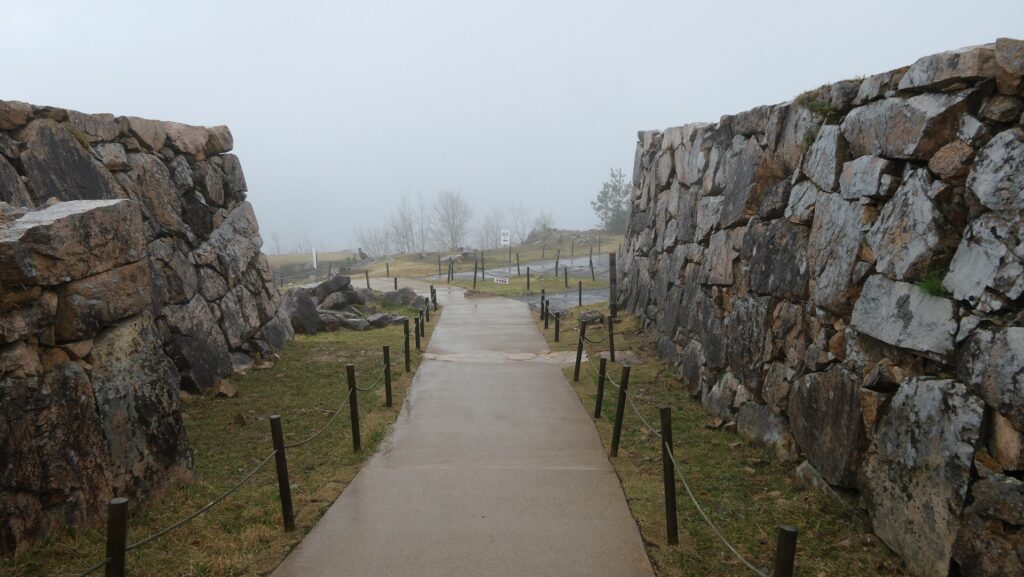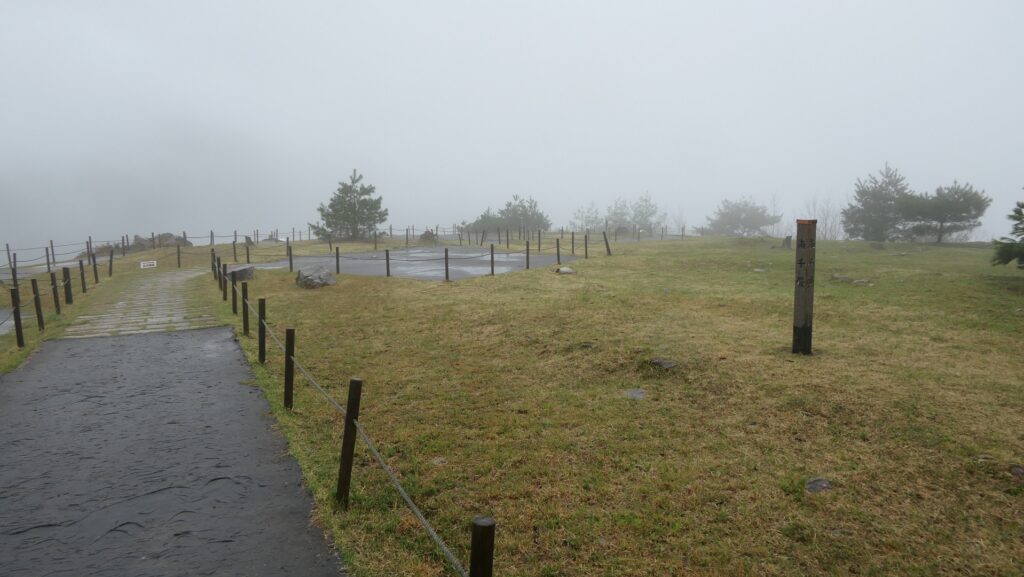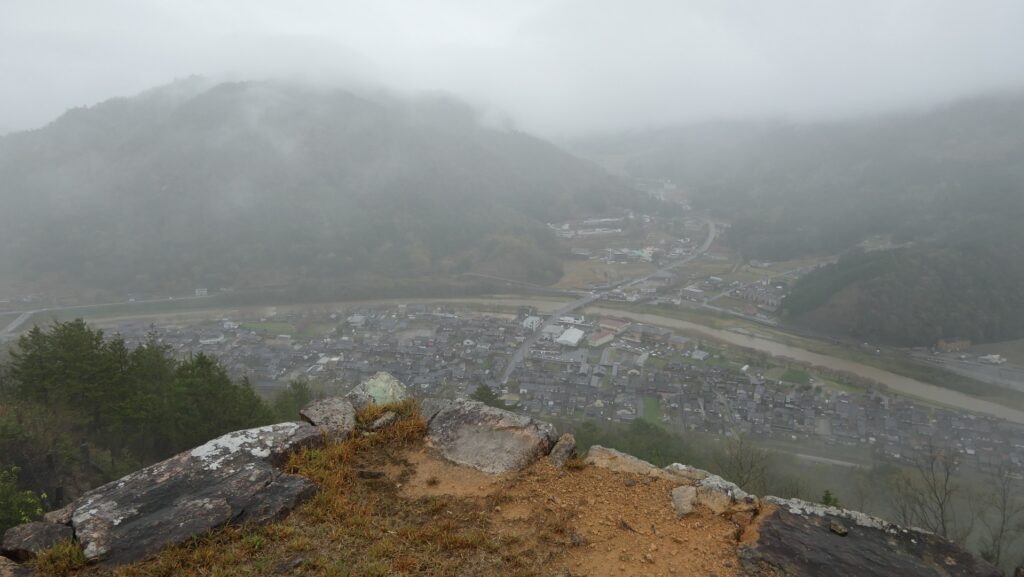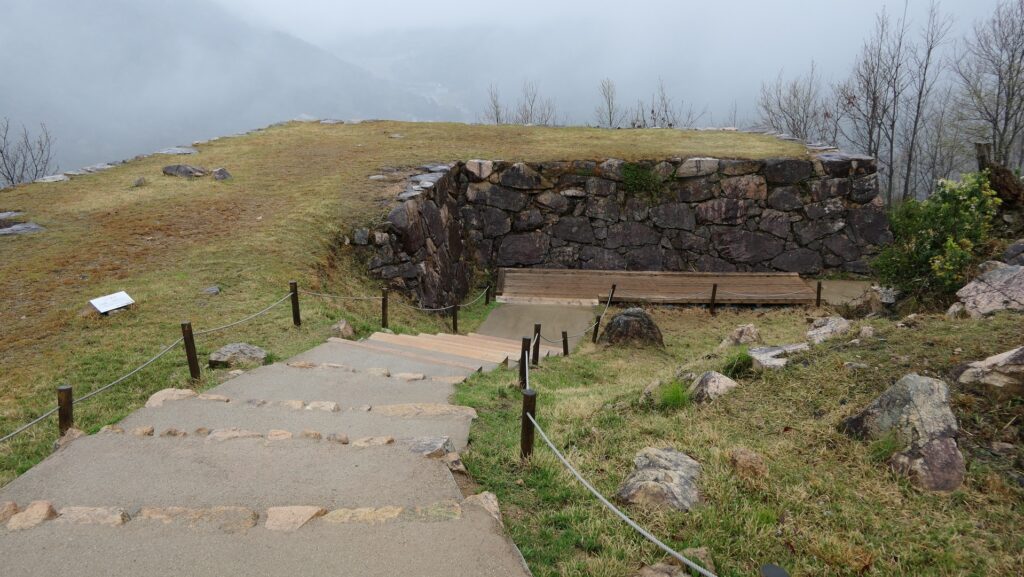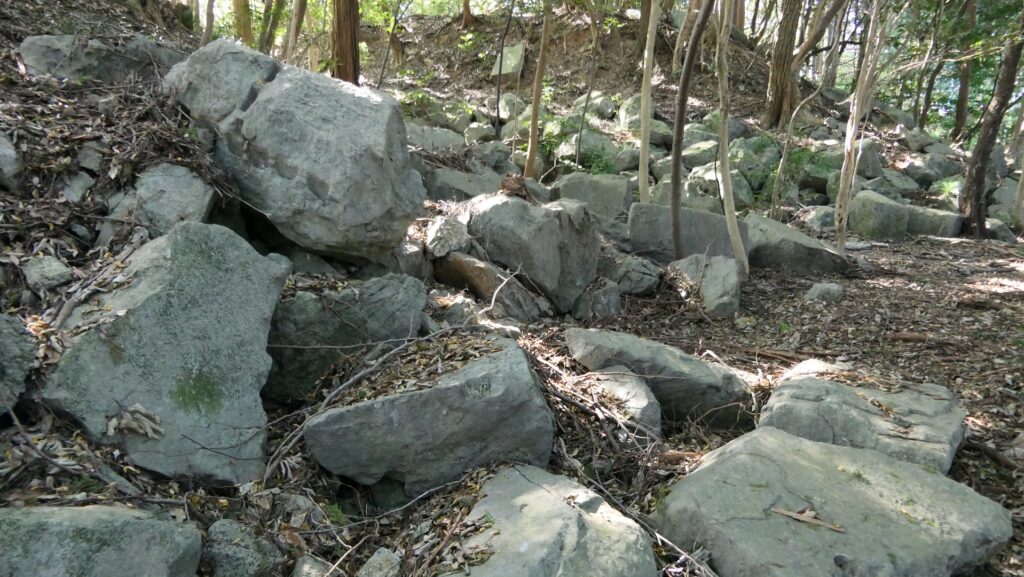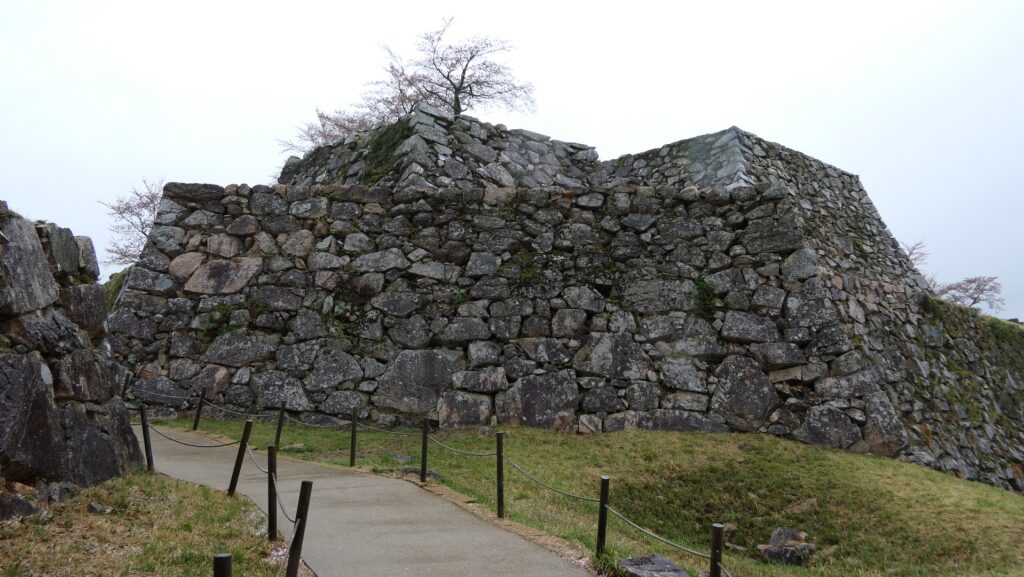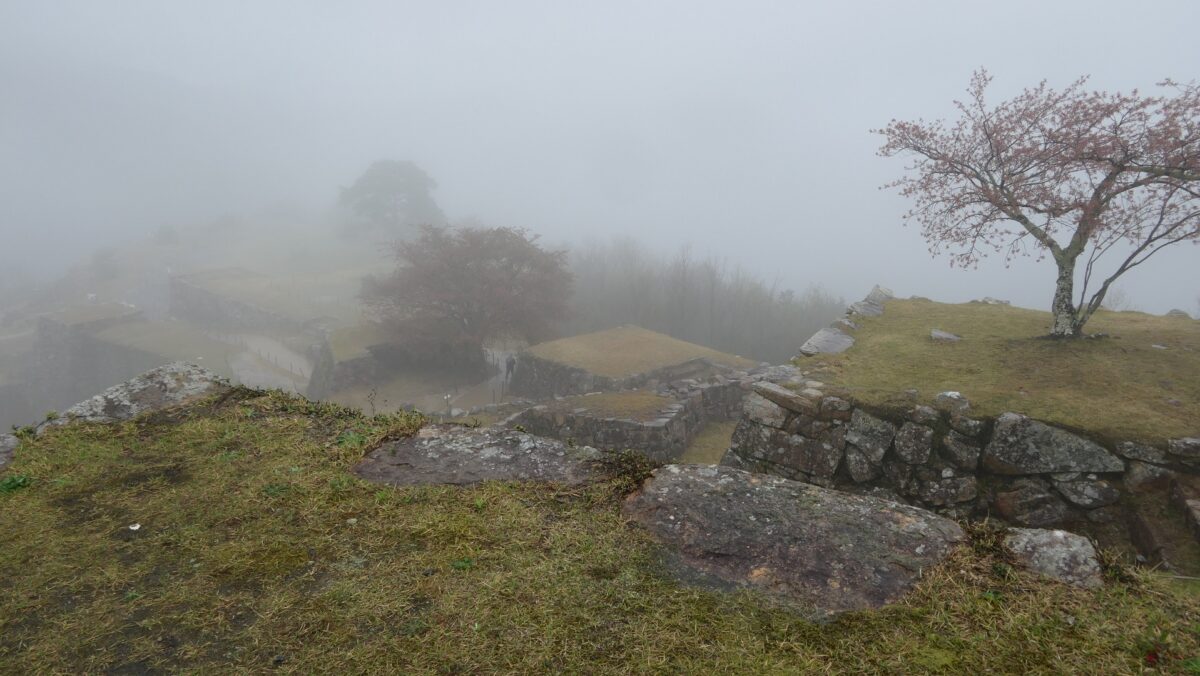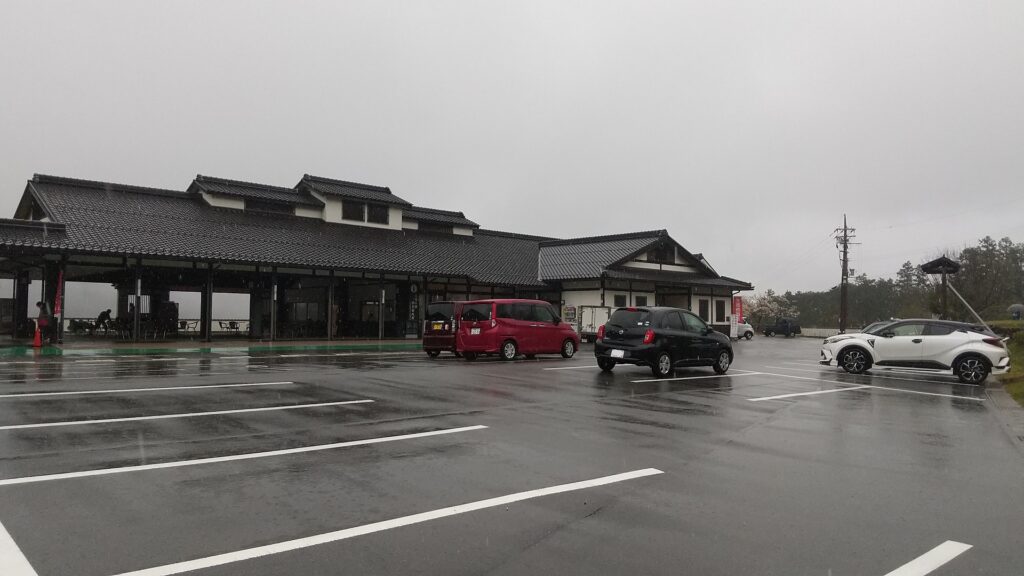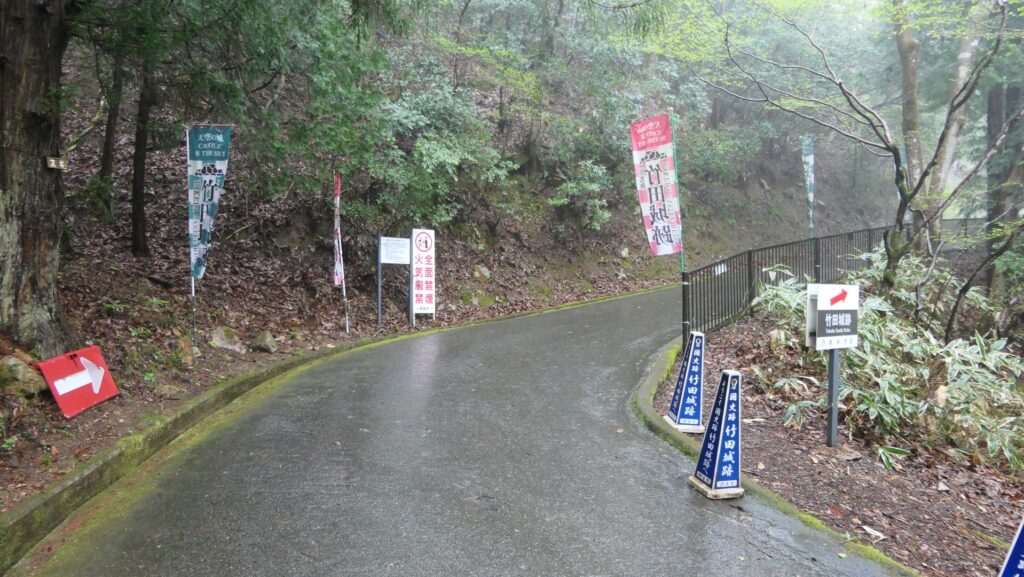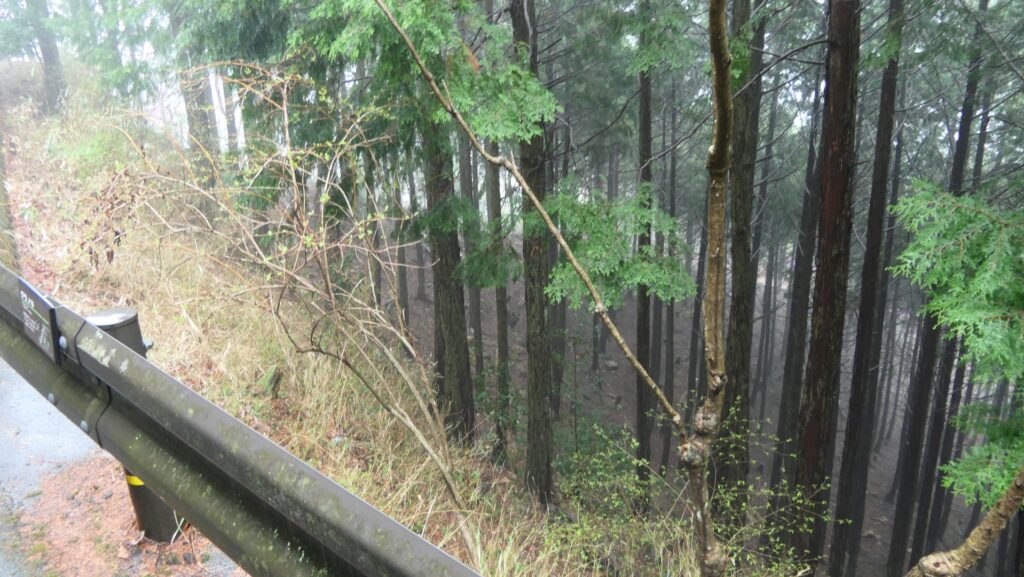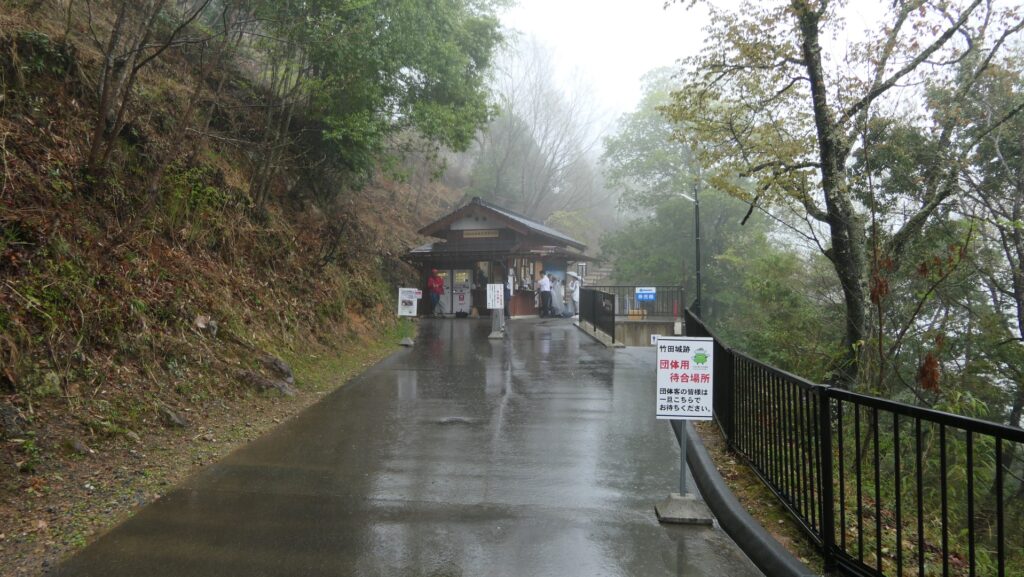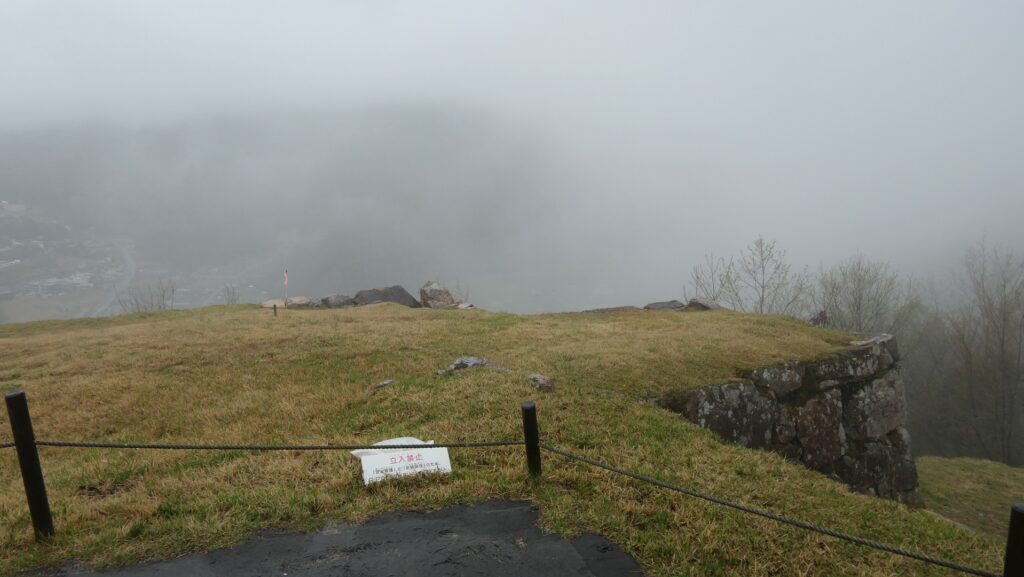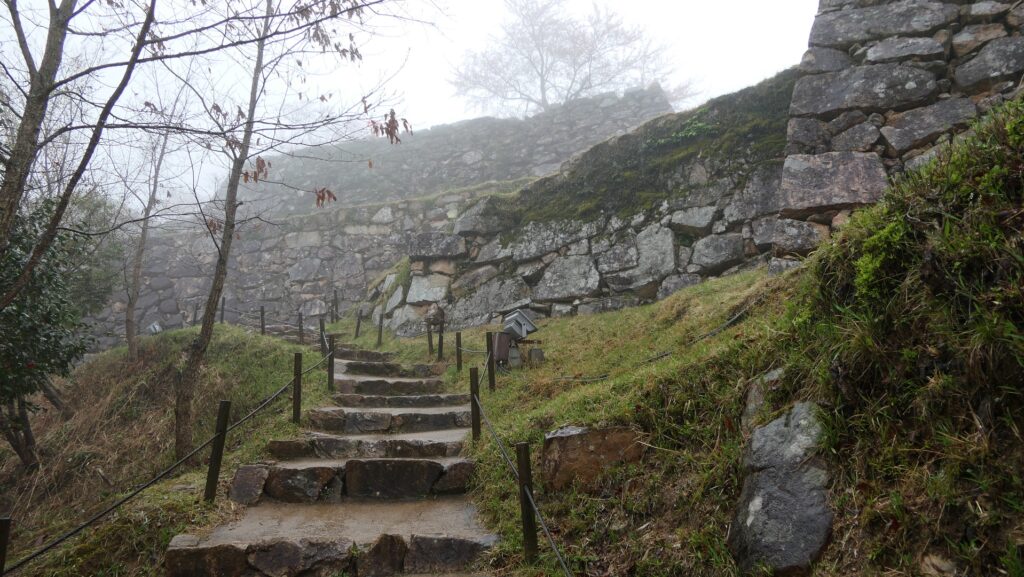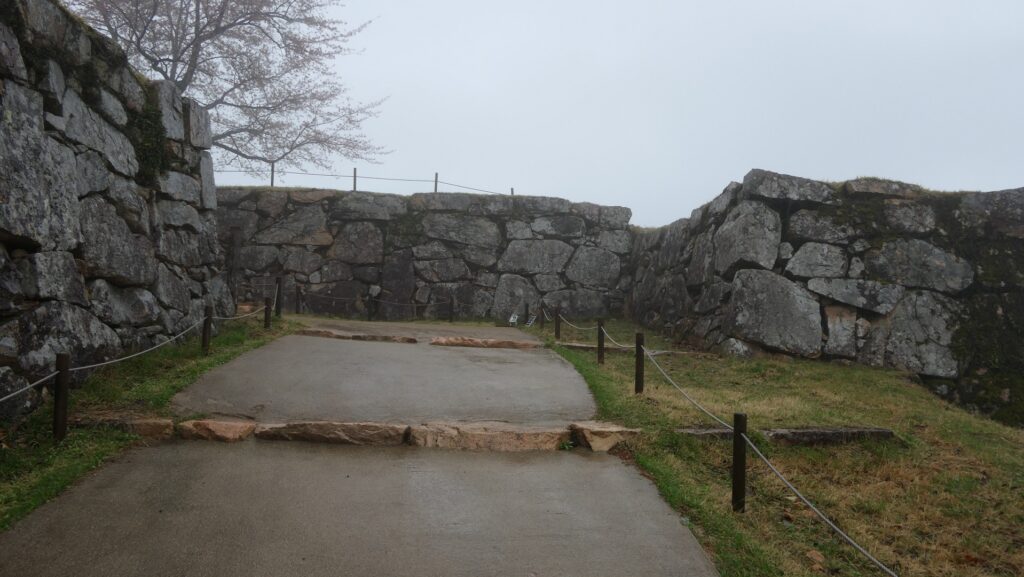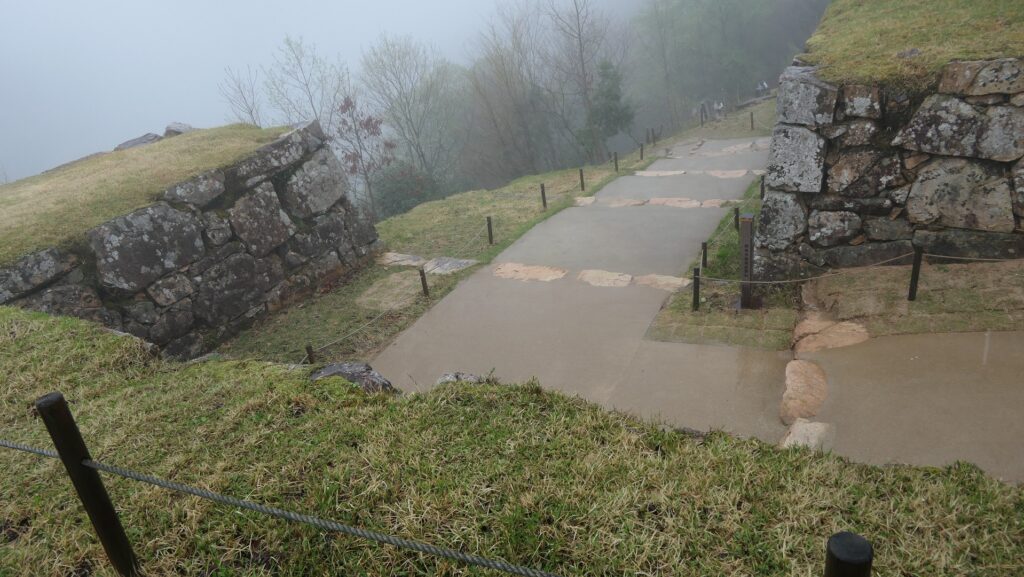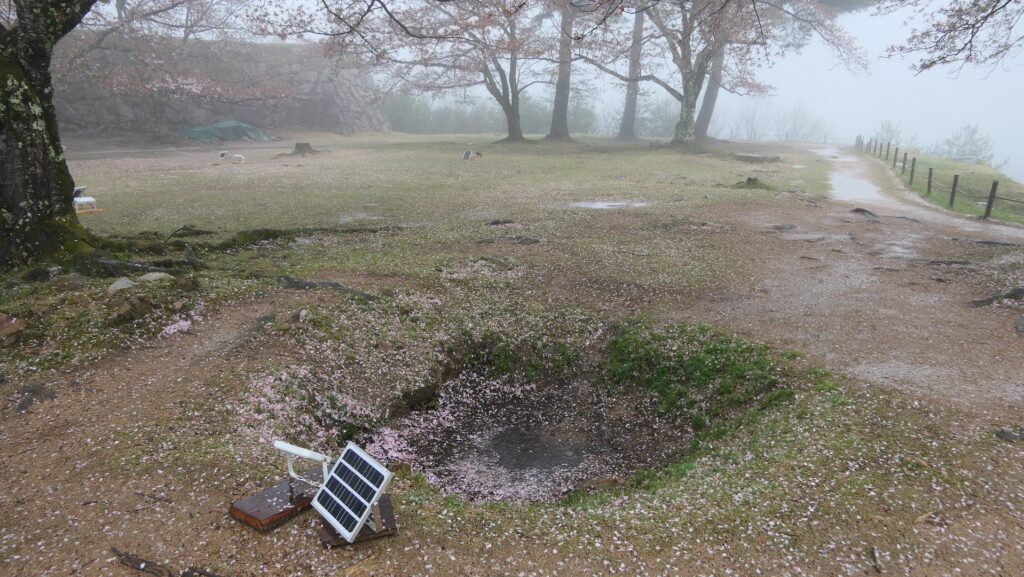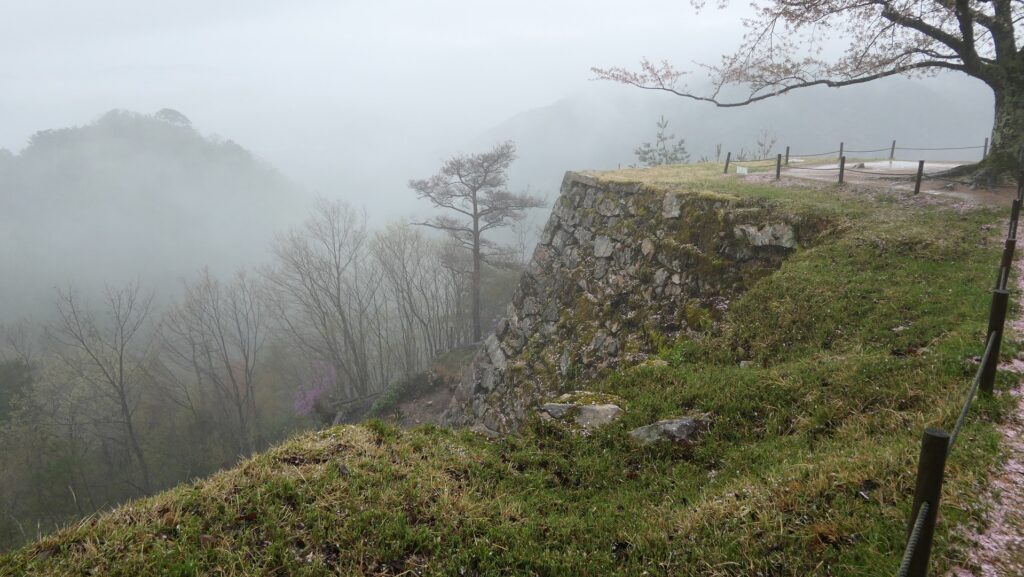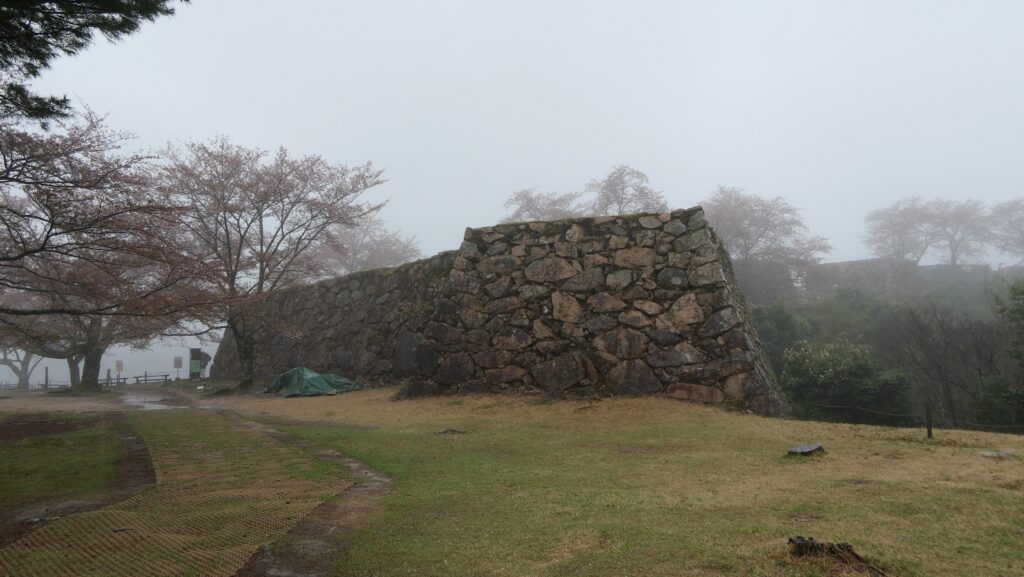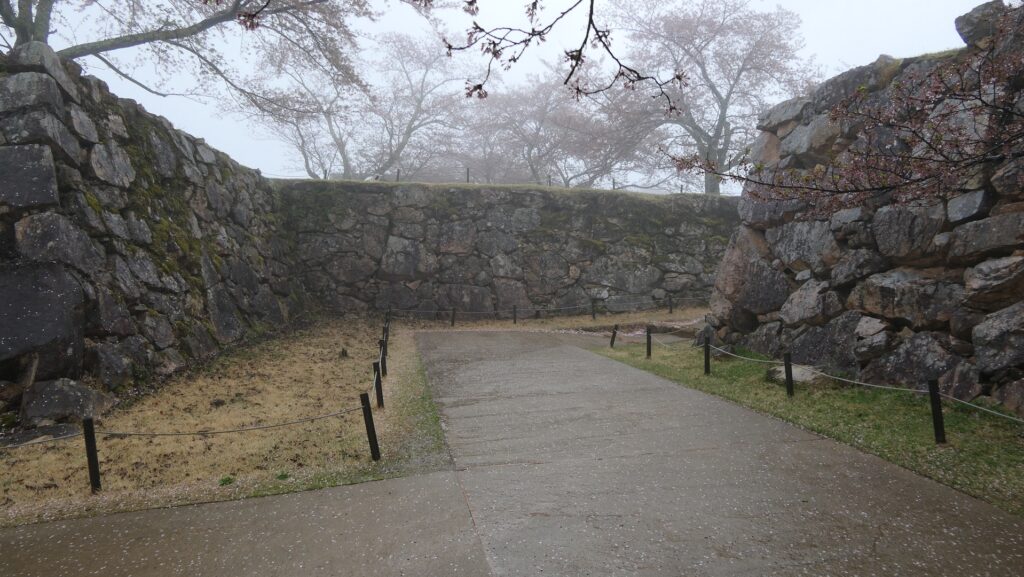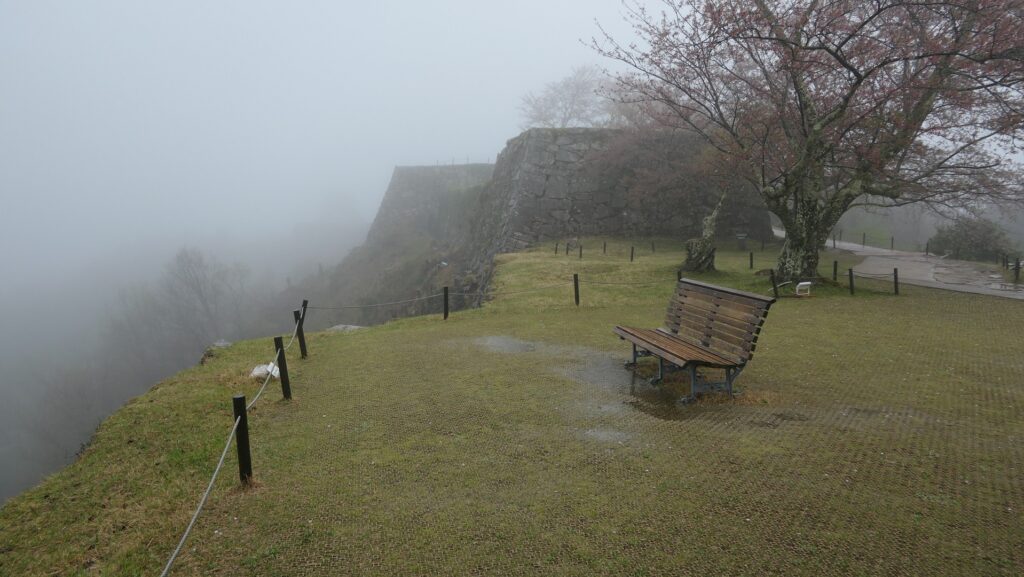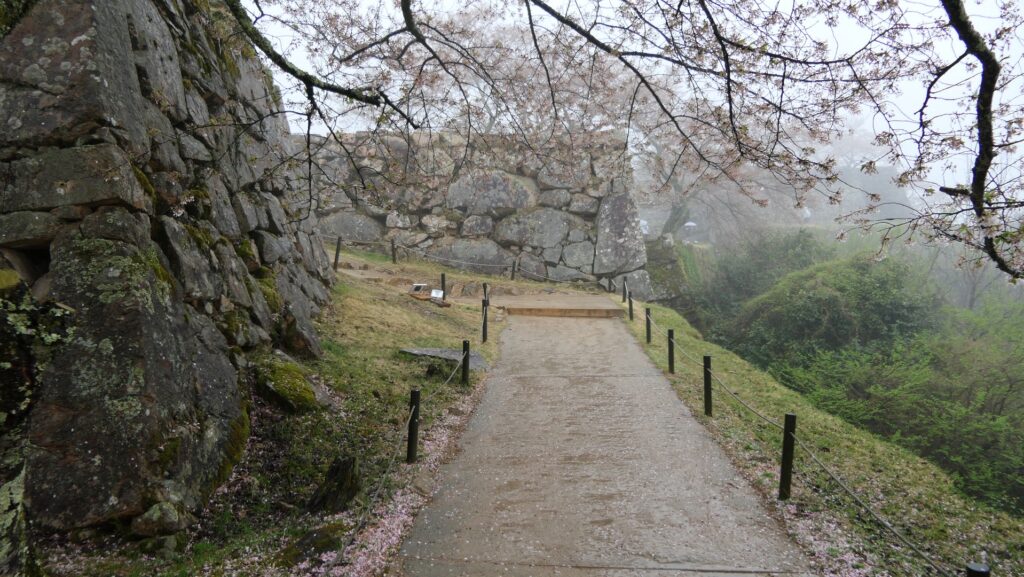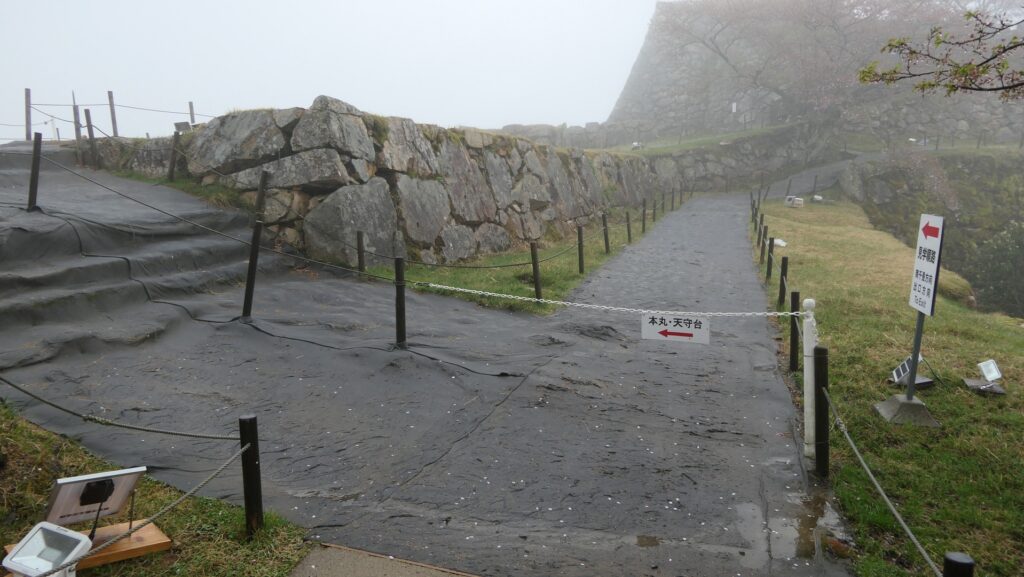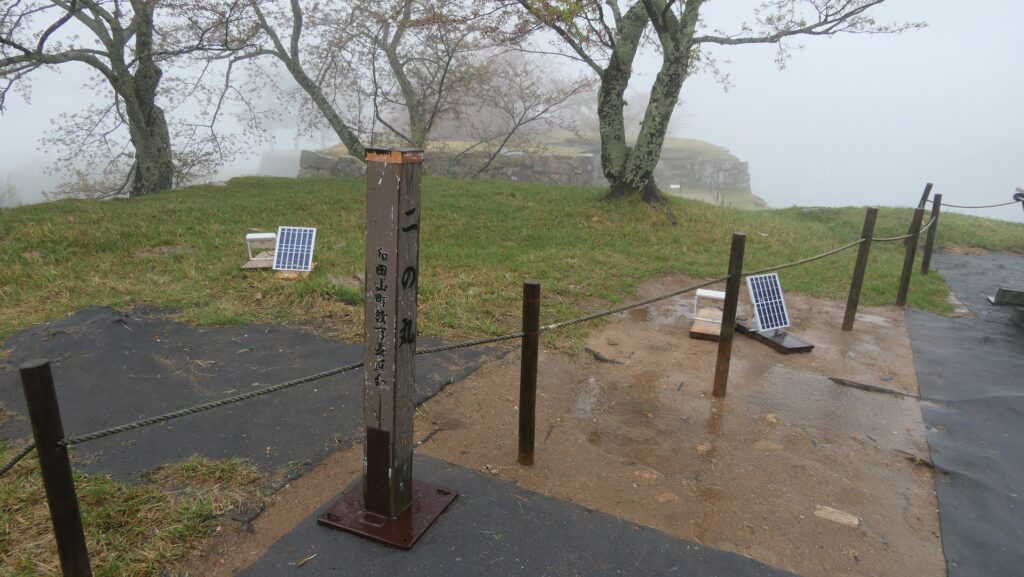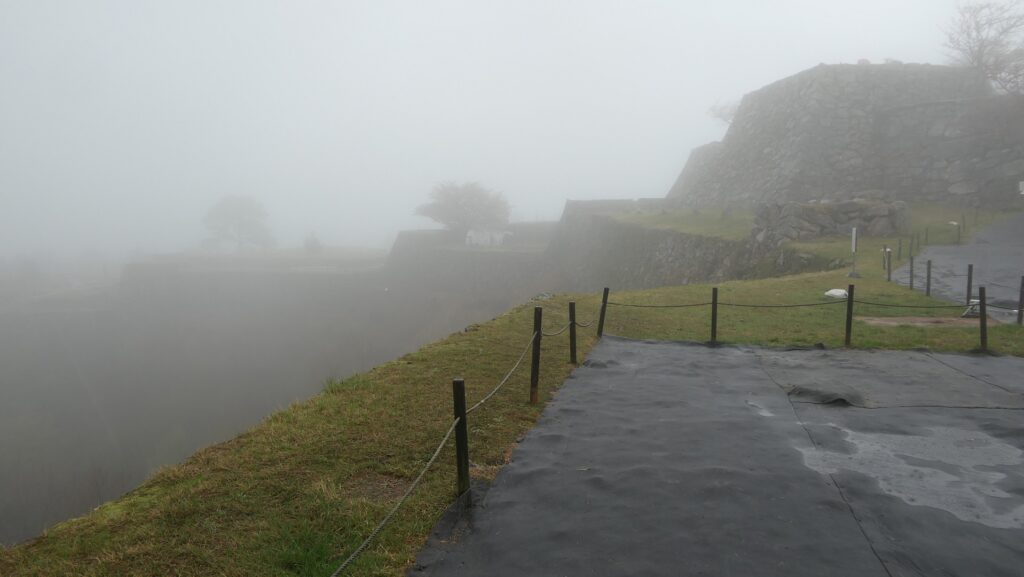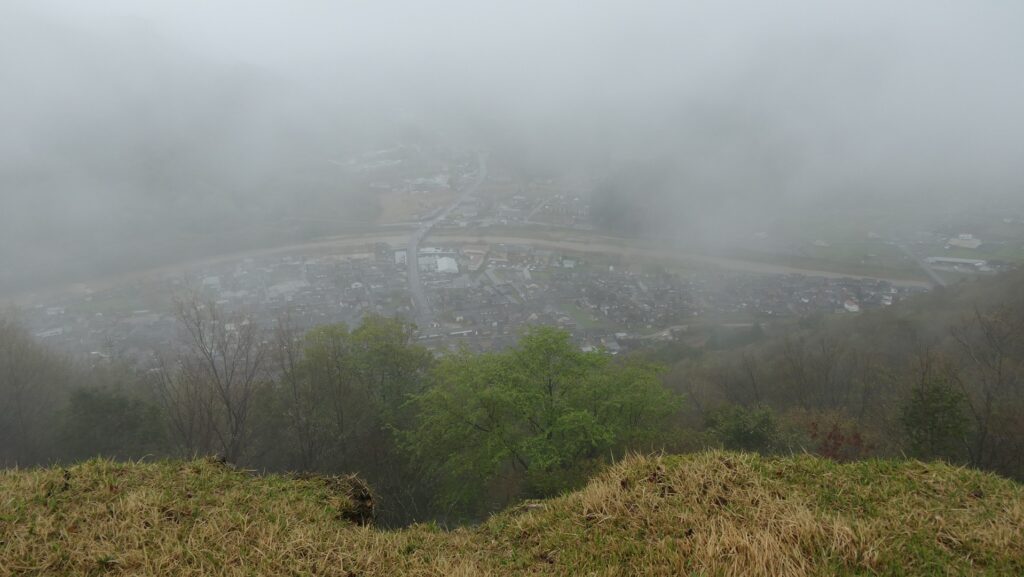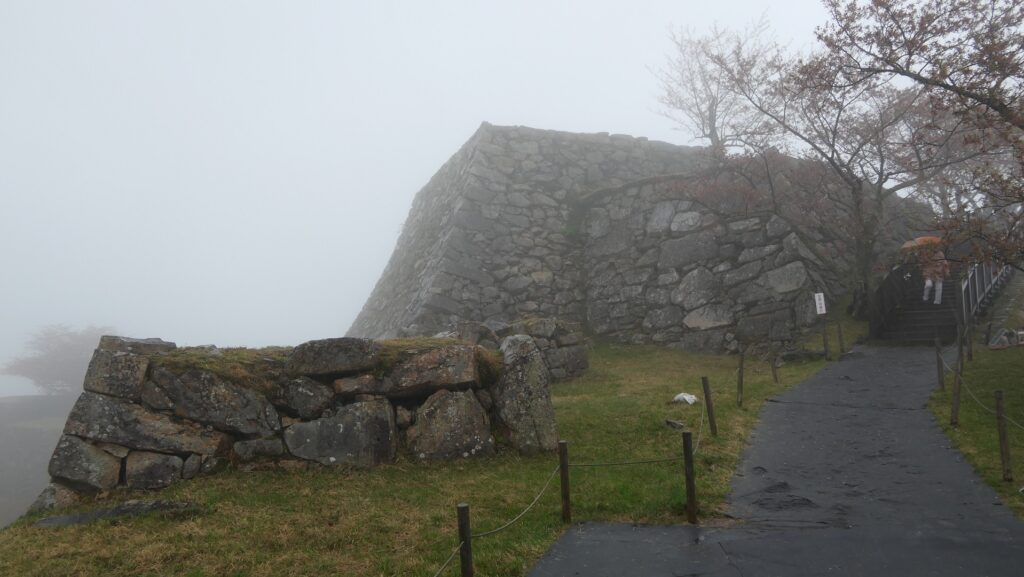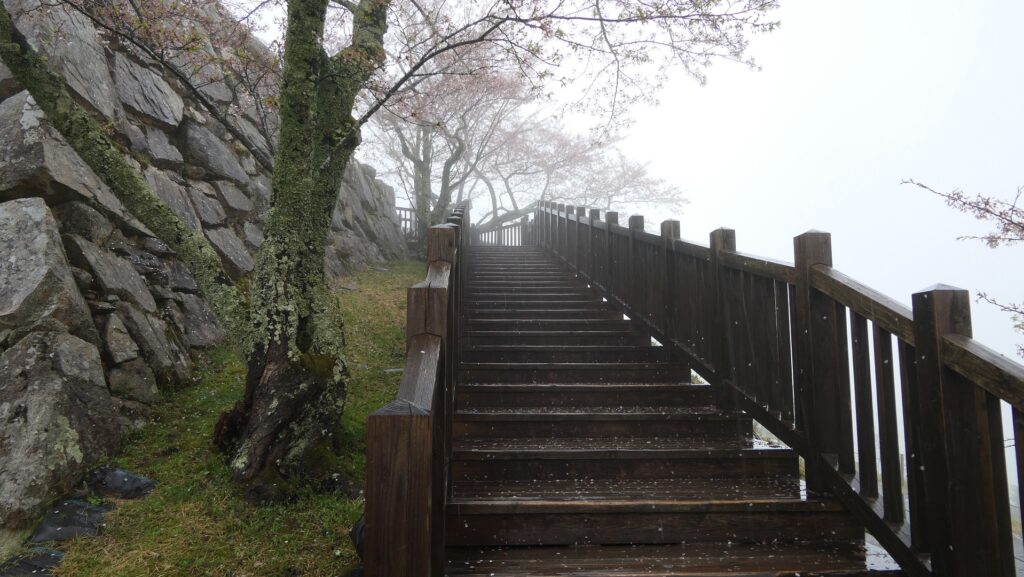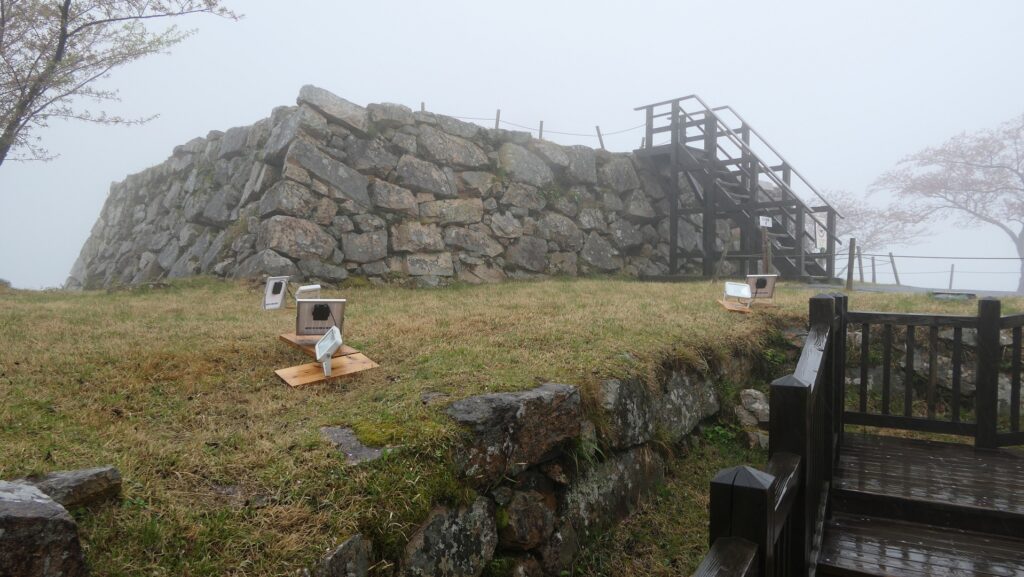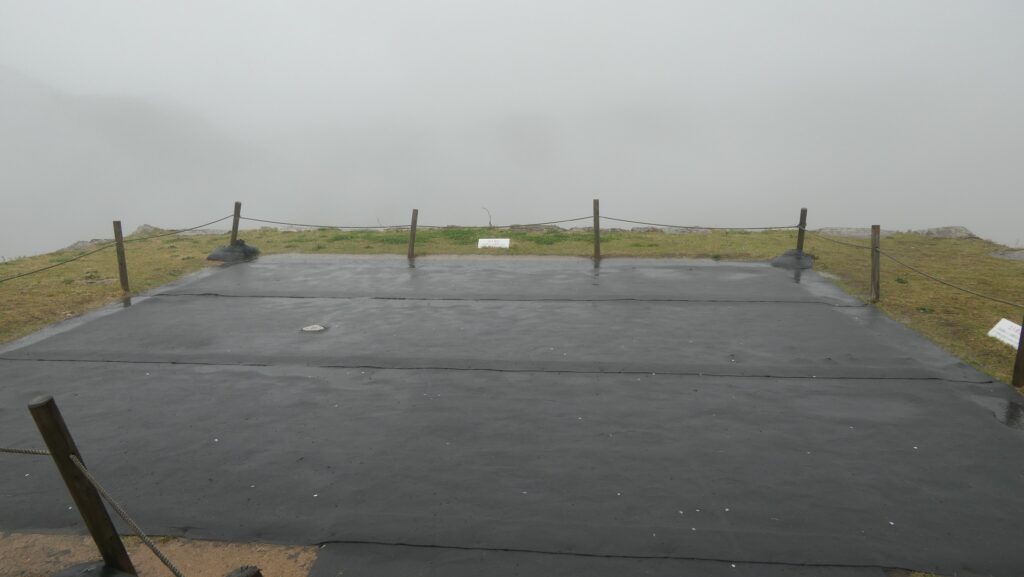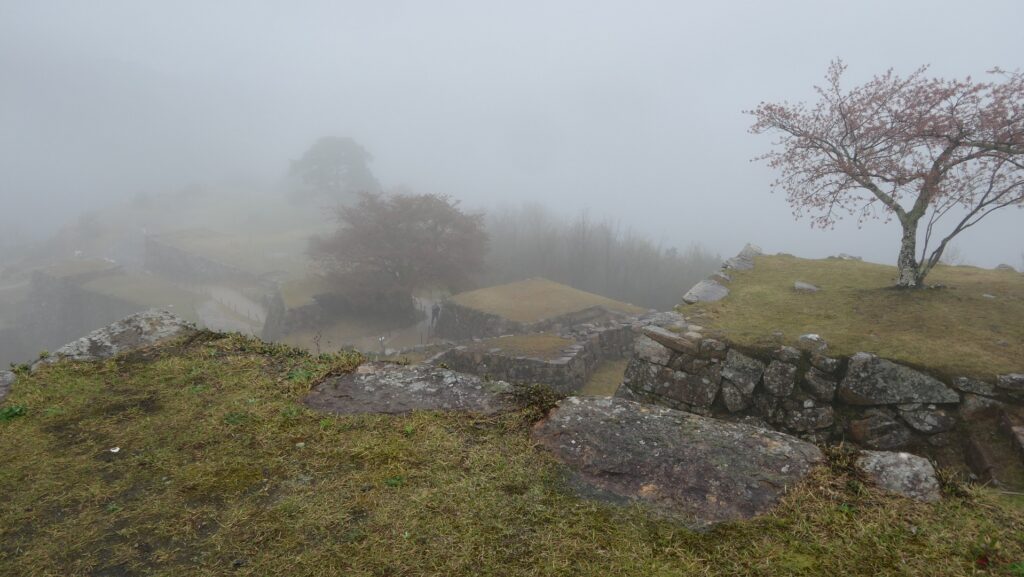Features
Going to Arikoyama Castle Ruins through Shrine Approach
There are two castle ruins in the Izushi area as mentioned in the previous section, which are Izushi and Arikoyama Castles. The latter is older than the former, so I will first describe how to visit Arikoyama Castle Ruins in this article. The entrance to the ruins is now also that to Arikoyama Inari Shrine which is located at the highest of Izushi Castle Ruins. Therefore, you will climb the stone steps of the approach from the foot of the mountain to the shrine though many of its red shrine gates.

You will also see several tiered enclosures of Izushi Castle with great stone walls and some restored buildings. The trail to the top starts from the point above the shrine building, so you need to prepare for hiking and something to keep you safe from wild animals (a bear bell or radio).
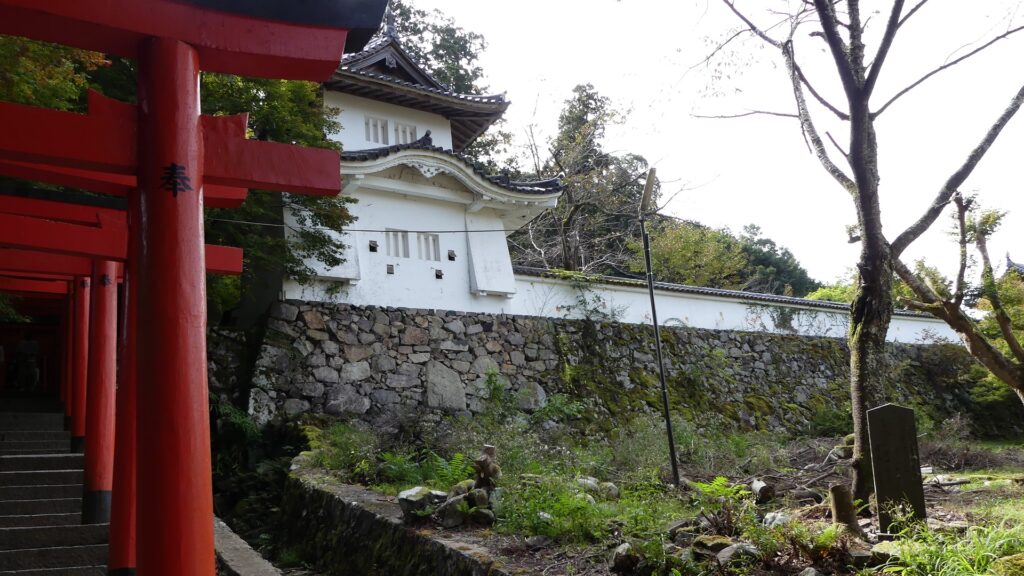



Steep Slopes as Natural Hazzard
The trail is very steep and goes straight on a ridge of the mountain, which was a natural hazard of the castle. It gets a little flatter on the way, but zigzags and then becomes narrow over an earthen ditch instead. They are perhaps ruins of an artificial defensive gateway.
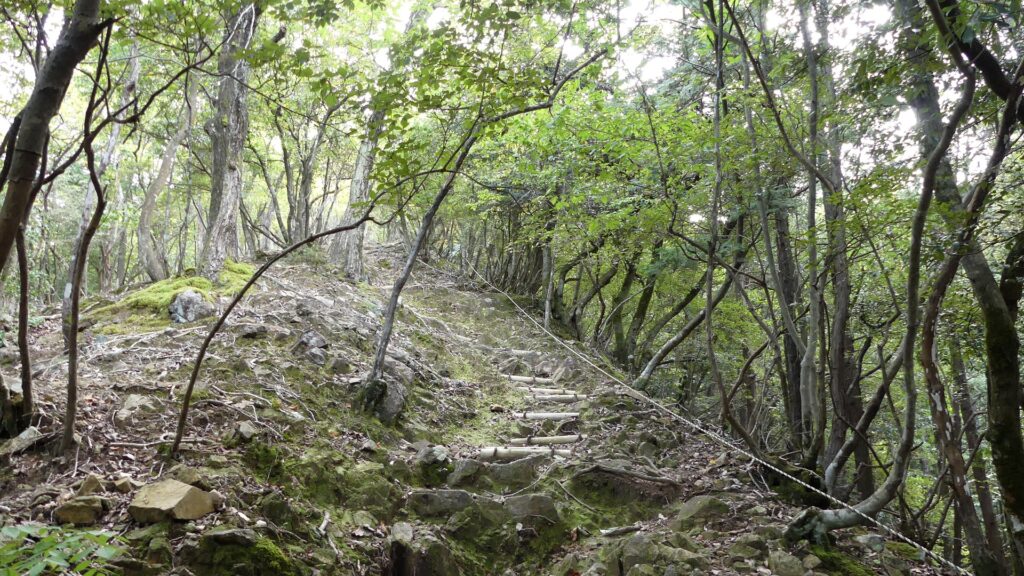
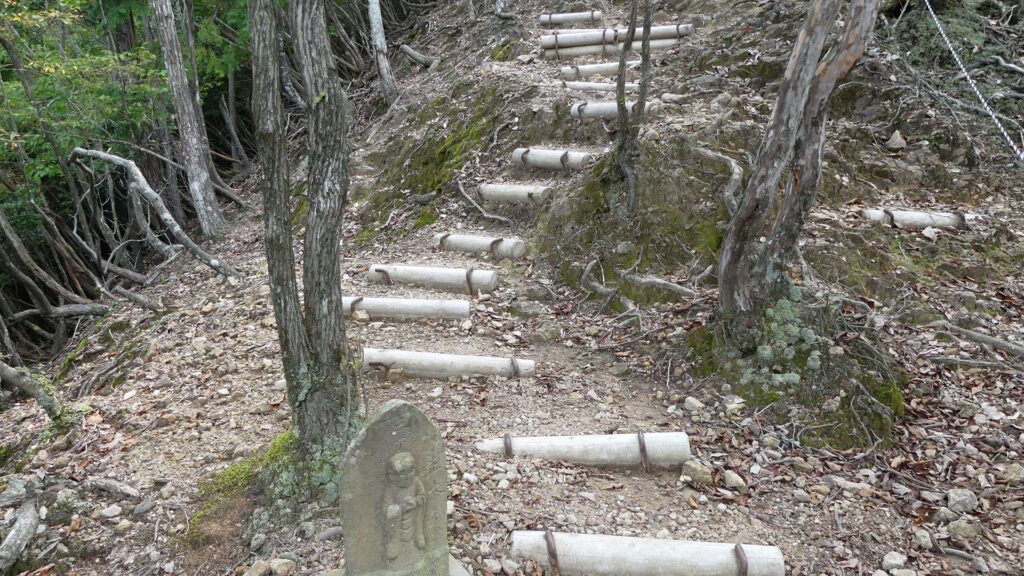


After that, you will go on the steep trail again, which may be too tough for some castle visitors. However, you will eventually reach around the top area and the route turns right to go around. The castle ruins are made of soil so far, but you will see some remaining stone walls around. This is probably because there is the Well Enclosure below the trail, so the walls were built to protect the well from collapsing or being buried.
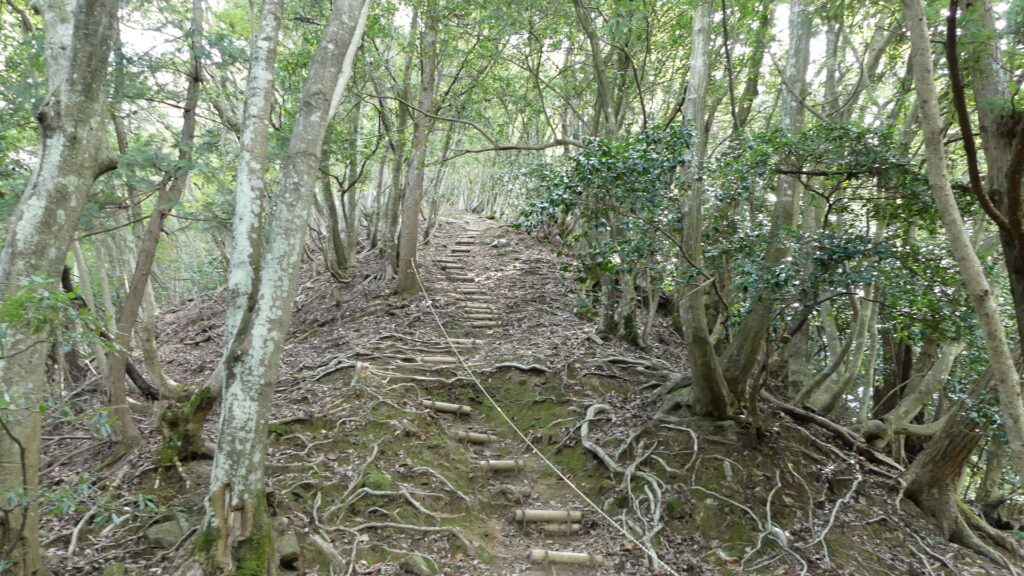
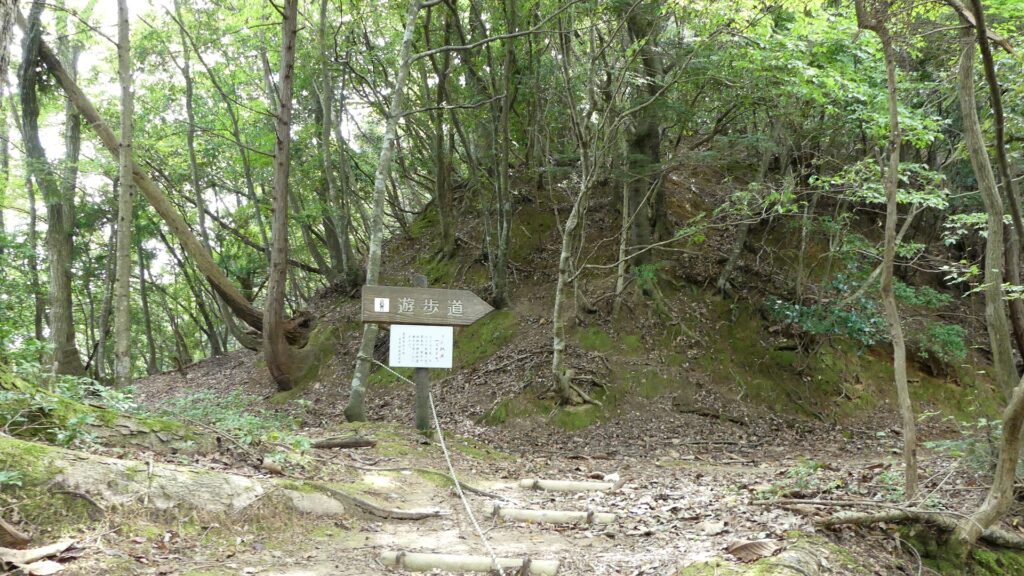

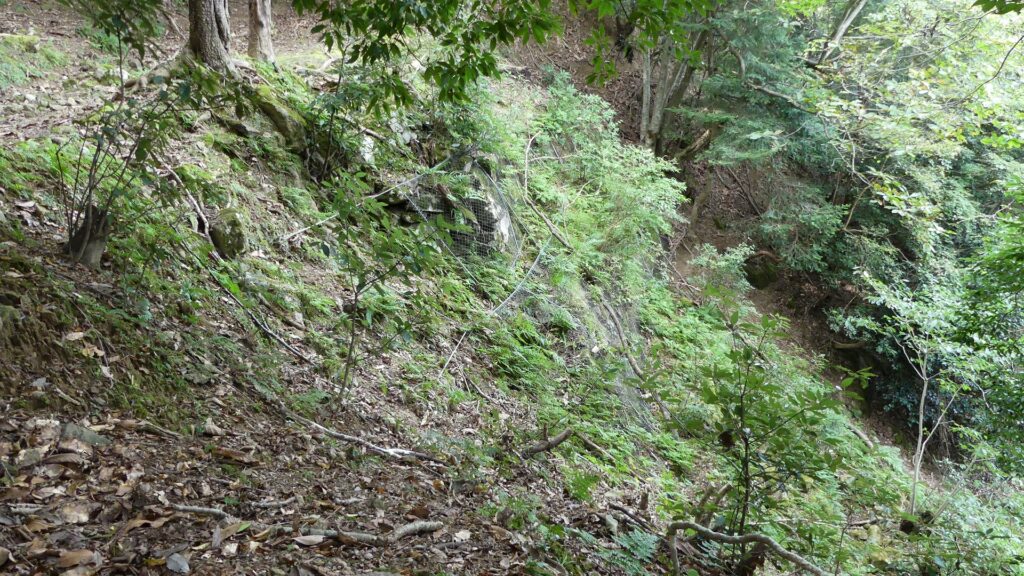
Six tiered Enclosures on Top
The trail turns left and go up again to the main portion of the castle on the top. The portion has six tiered enclosures which are all surrounded by stone walls using natural or roughly processed stones. That means, these stone walls are an early example of those for castles, which were probably built by Takatora Todo.
The map of the main portion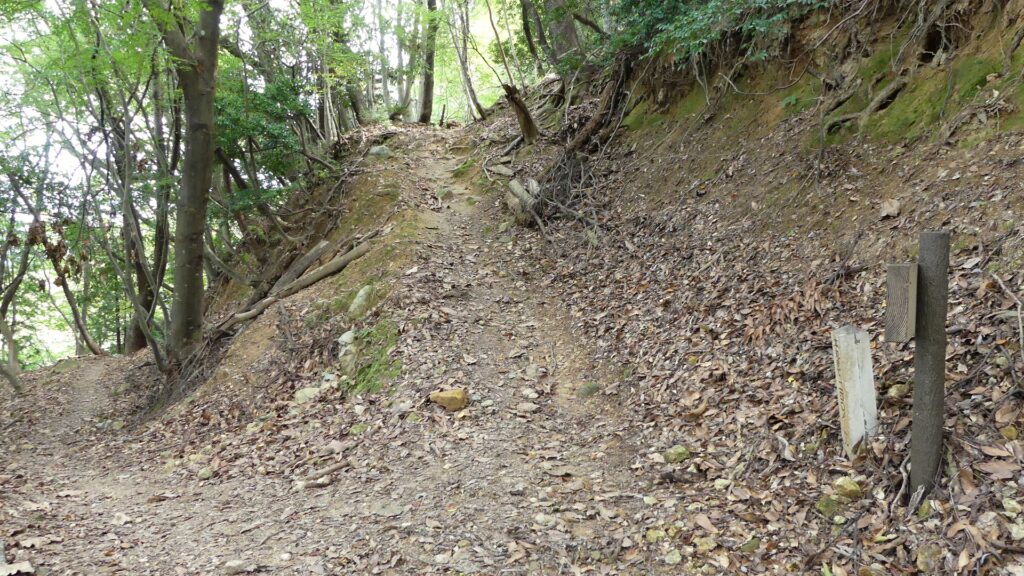

In addition, if you go straight on the branched trail, you will get to the quarry for the stones.


The enclosures are in line from the sixth enclosure on the bottom to the main enclosure on the top. Many of their stone walls were covered by wire nets to avoid from collapsing.
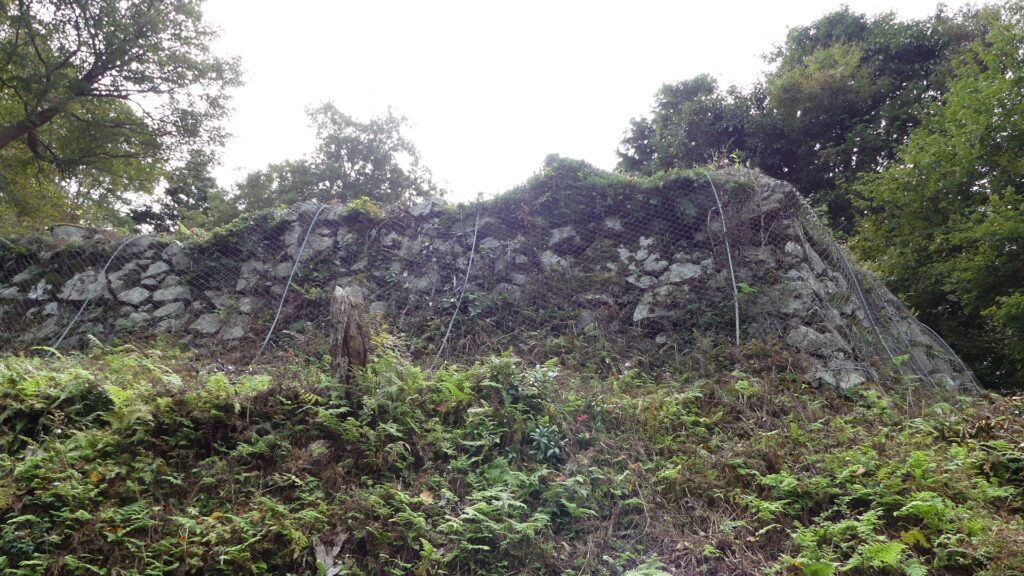

There is only the rest station and the signboard on the main enclosure. However, the view of the Izushi area from the top, about 300m above from the foot, is really breath-taking view! The stone walls of the enclosure are what you saw from the foot.

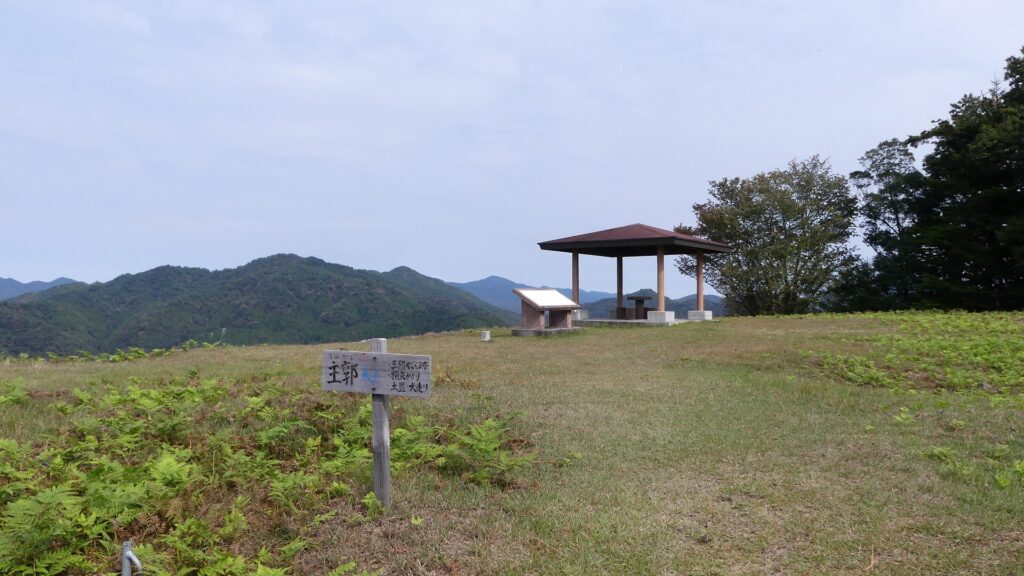
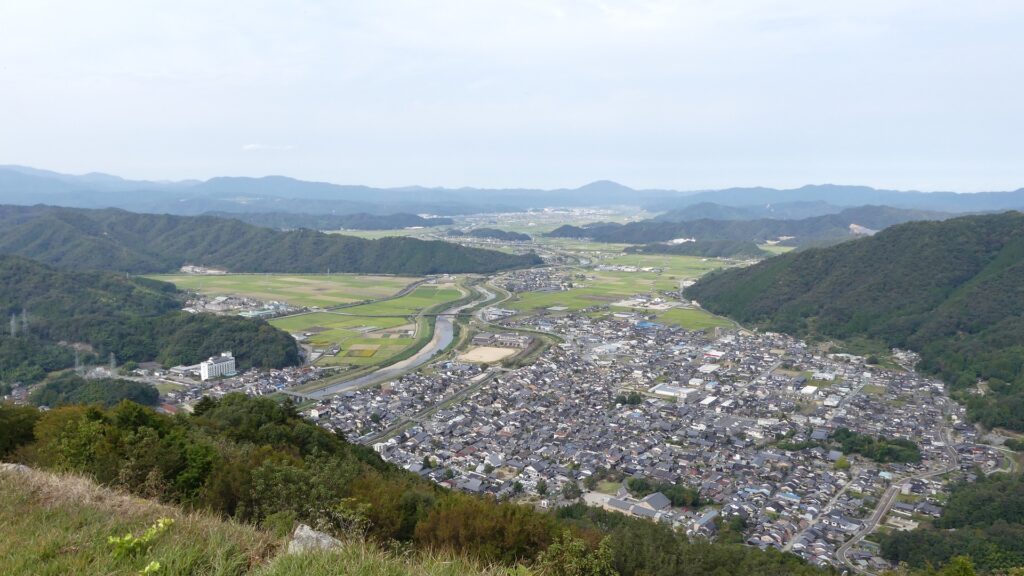

Very spacious Senjousiki Enclosure for top area
The Senjoshiki Enclosure is next to the main portion, which is separated by a huge artificial ditch. You can go there by passing the top of the forth enclosure. The enclosure is mostly made of soil, but very spacious for the top area of the mountain which was used as the lord’s residence or a station for large troops.
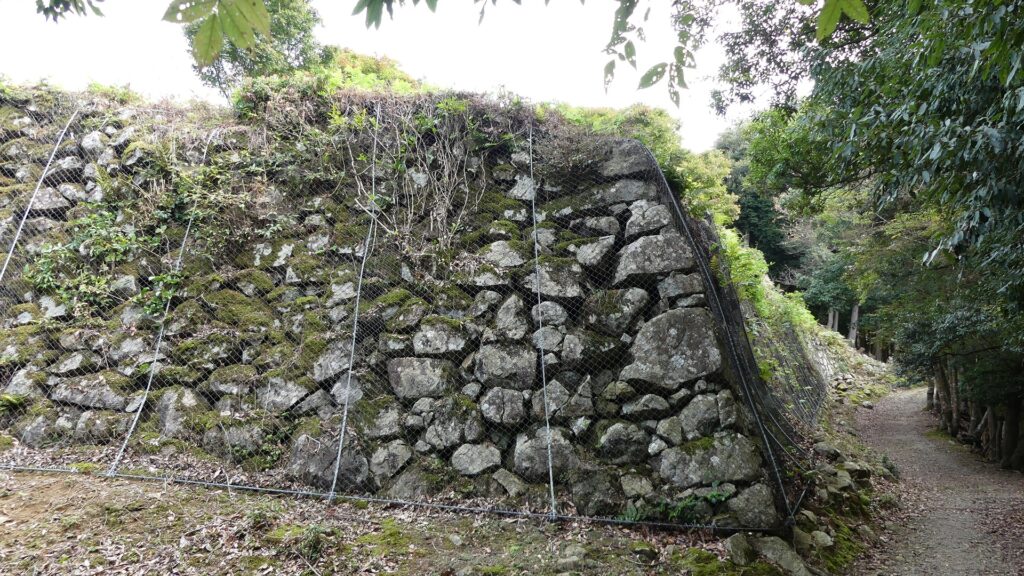
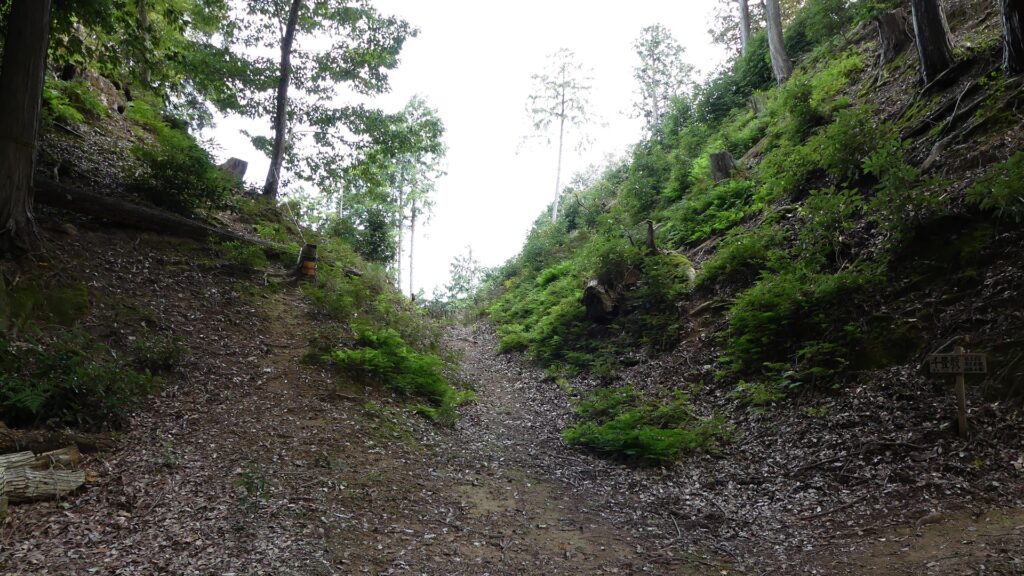


To be continued in “Izushi Castle/Arikoyama Castle Part3”
Back to “Izushi Castle/Arikoyama Castle Part1”

